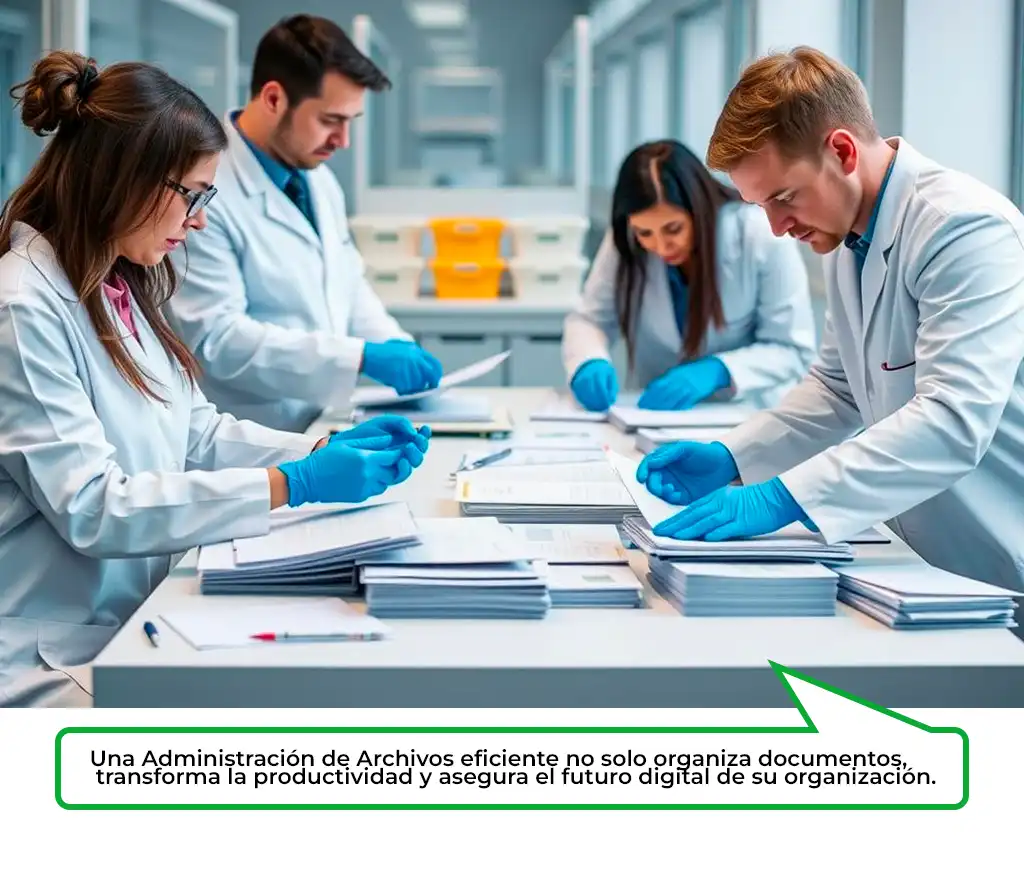Nowadays, the digital environment has profoundly changed the way documents are preserved and managed. Records Management and document management have become key aspects, as they enable efficient organization, protect information, and ensure quick access to data.
The relevance of these practices within the digital environment lies in the growing need to control and keep in order the vast amount of information handled daily. With the rapid growth of digital data volumes, it becomes essential to have systems and methodologies that allow for the quick location of required documents, optimizing time and reducing the effort dedicated to organizing, searching, and retrieving data.
Fundamental Principles of Records Management and Document Management
Records Management involves developing a series of tasks and procedures aimed at ensuring the optimal handling of documents throughout their entire life cycle, from creation to final disposal. These records may exist in both physical and digital formats and contain valuable information for individuals, companies, or institutions.
In contrast, document management encompasses the control, organization, and administration of documents throughout all their stages. This includes defining policies, establishing specific procedures, and implementing systems that govern the creation, capture, storage, retrieval, and disposition of such documents.
Transformation of Document Management in the Digital Age
With the arrival of new technologies, the way Records Management is carried out has undergone significant changes. Technological advancements have supported the transition from printed documents to digital formats, making storage, access, and distribution more efficient.
Digital Records Management has opened up new possibilities, such as the use of cloud storage, the adoption of electronic document management systems, and the implementation of tools like Optical Character Recognition (OCR), which allows the digitization of physical documents and the extraction of information from them.
These developments have brought significant benefits: reduced physical storage space requirements, faster file search and retrieval, easier remote information sharing, and improved coordination in workflow processes.

7 Key Principles for Efficient and Secure Records Management
1. Identification and Categorization of Documents
The first step toward efficient document management is correctly identifying and classifying documents. This involves analyzing the different types of documents used by the organization and establishing classification criteria such as type, subject, date, client, among others. Proper classification ensures organized management and facilitates the retrieval of specific documents when needed.
Clear policies should also be defined regarding the retention period of records and their secure disposal once they are no longer needed. Additionally, it is recommended to conduct audits and monitor all actions performed on the documents to maintain traceability of access, modifications, and reviews.
2. Development of Policies and Operating Standards
Once the documents have been identified and organized, it is essential to define clear rules and policies for their management. These guidelines should establish how documents will be handled, who will be responsible for their custody, what processes will be followed for making modifications or revisions, and how they will be approved and distributed. These rules must be properly documented and communicated to everyone involved in Digital Records Management.
3. Structured Design of the File System
Establishing a logical structure for files is essential for efficient Records Management. This structure should reflect internal hierarchies and relationships between documents, whether digital or physical. It may include the creation of folders and subfolders, assigning meaningful file names, as well as using metadata to facilitate searches. A structured organization streamlines information access and prevents document loss or duplication.
4. Incorporation of a Metadata System
Metadata is essential for document organization. It refers to supplementary information associated with documents, such as keywords, dates, authors, and descriptions. This enables faster and more specific searches. It is important to define which metadata will be used and to ensure they are applied consistently and updated regularly.
5. Access Control and Permissions
Establishing different levels of access is crucial to safeguard the confidentiality and security of documents. It is necessary to assign permissions according to roles and responsibilities, ensuring that only authorized personnel can view or modify certain documents, thereby preventing unauthorized changes or access.
6. Records Retention and Disposal Program
Every organization should have a program that determines how long documents must be retained and when they should be disposed of. This program must comply with both legal requirements and the organization's internal policies. Proper implementation prevents unnecessary file accumulation and reduces legal or security risks.
7. Backup and Information Recovery Strategy
One of the pillars of solid Records Management is having a plan that ensures the protection of files against potential loss or incidents. This involves creating regular backup copies, using redundant storage, and conducting periodic tests to guarantee data recovery. A well-defined strategy ensures operational continuity and prevents irretrievable loss of critical information.

Technologies and Digital Tools Applied to Records Management
Within the digital ecosystem, there are various technological solutions that can enhance the efficiency and organization of documentation. Below are some of the most relevant:
A. Document Management Systems
Document management systems are designed to capture, store, organize, and retrieve electronic documents. Their key features include:
- Automatic classification and indexing through metadata.
- Version control, with change history and access to previous versions.
- Workflow automation, optimizing validation and distribution processes.
- Real-time collaboration, allowing simultaneous work on the same document.
- Compatibility with other business tools to ensure integration.
- Security and access management, restricting unauthorized modifications and access.
Advantages of a Document Management System in Companies:
- Greater efficiency and time savings in Records Management.
- Elimination of physical paper storage.
- Improved productivity and collaboration among teams.
- Compliance with legal and regulatory requirements.
- Increased security in information handling.
B. Scanning and Digitization Equipment and Applications
To convert paper documents into digital files, traditional scanners, portable devices, and mobile apps are used. This conversion facilitates storage and search, as well as integration with document management systems.
C. Cloud Platforms and Online File Management Services
Digital cloud storage represents an efficient and secure solution for managing electronic documents. It allows remote access, simultaneous collaboration, and ensures data protection with high security standards.
At Protech Ingeniería, we are a company specialized in technological solutions that support organizations in digital Records Management. Thanks to our experience, we offer innovative tools that simplify and enhance document management processes in the cloud.
D. Electronic Records Management Platforms
These tools are focused on the preservation and administration of digital records, ensuring their validity, integrity, and accessibility over time. Their features include:
- Capture, organization, and structured indexing of electronic records.
- Advanced search and retrieval tools.
- Application of retention and disposal policies in compliance with legal requirements.
- Audit functionalities to track changes and document access.
E. OCR Technology (Optical Character Recognition)
The OCR software converts scanned documents or images into editable text, allowing for automated searching, editing, and analysis. It uses complex algorithms to accurately extract characters while preserving the original format.
Main Functions of OCR:
- Extract text from scanned physical documents.
- Accurately recognize characters and convert them into digital text.
- Preserve the original document’s layout and format.
- Automatically detect the language of the scanned text.
Benefits of OCR in a Company:
- Time savings through automation of the transcription process.
- Efficient search within the content of digitized documents.
- Reduction of human errors in data entry.
- Improvement of internal processes thanks to automation.
- Less paper usage and optimized storage space.
Ready to optimize Records Management in your company?
Contact Us Now!
Discover how implementing an efficient document management system can transform the way you work.








